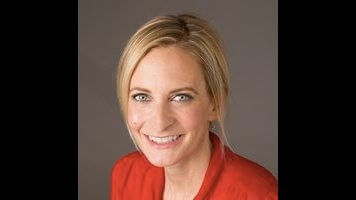Primates Of Park Avenue is a fascinating but tone-deaf study of the ultra rich

It’s impossible to divorce yourself from Wednesday Martin’s attempt to anthropologically study the mothers of New York City’s Upper East Side. Whatever your socioeconomic status—and it’s likely you don’t have nearly as much money as Martin does—you bring your own perspective to the material, one that’s inexorably shaped by the numbers of your bank account. For readers like me (and likely anyone who works for a living, which is to say, nearly everyone), it’s often hard to sympathize with Martin’s accounting of the problems of the disgustingly rich. Anyone who worries about money in real ways will find Primates Of Park Avenue infuriating.
It’s also fascinating, if you can grit your teeth through descriptions of the trials and tribulations that come with securing a rare handbag that cost tens of thousands of dollars and other such “problems” of the excessively privileged. To study any population, a researcher must take the subjects’ goals and habits at face value, and Martin does exactly that. It’s both the triumph and failure of Primates Of Park Avenue. “I marveled, day after day, at the abundance all around me,” Martin writes of her move to the Upper East Side. “It wasn’t just that the neighborhood and the neighbors were rich. Through the lens of anthropology, I saw that they lived in a state of what one could only term extreme ecological release.” Like many with a little wealth in developed nations, this population doesn’t have to worry about food and water shortage or animals eating them. Unlike most of the masses, however, the “mommies” of the Upper East Side are freed from work—both out of the home and within it—and therefore busy themselves with a whole other array of labor, which Martin dissects and details, seeking to understand the ritualized world of lunchtime galas and extreme body issues.
Here’s the “poor rich woman” part of the story. The mommies under study live in a world of “haves, have-mores, and have-mosts,” and out of the excess a host of anxieties and disorders are born. Martin’s peers (and Martin herself) are genuinely stressed about getting their children into the best nursery schools; they starve themselves and exercise to exhaustion to stay thin; they perform a lot of real labor in schools, for charities, and on themselves. Their appearance, social connections, marital status, and children’s successes contribute to a bizarre hierarchy that’s at first impenetrable to Martin. When she drops her 2-year-old off at nursery school on his first day, her friendly “hello” is not only ignored, but the PTA mom raises her eyebrows and turns her back on Martin. The author has a Ph.D. and a background in anthropology and primatology, so it’s not long before she’s analyzing her fellow mommies in terms of what she knows about olive baboons.
The book is at it’s best when Martin analyzes her population this way. Comparing a group of women to primates, their family planning to those of birds, their interactions with men to groups of mice—these make for compelling insights. In her New York Times piece, Martin draws startling conclusions about the status of women, using the tools of anthropology to understand how such a wealthy community houses such drastic gender inequality. One wishes Martin drew such conclusions for the rest of her studies; often, she’ll make an interesting comparison but fail to glean greater insights. This is most egregious in the many instances she fails to understand the working class exploitation that accompanies the extreme wealth she luxuriates in. Her attitude boils down to “don’t hate the player, hate the game.” But the games she plays—whether it’s getting her child into the right playdate group or jumping through hoops to secure a Birkin bag—have the stench of unrecognized privilege. The book is engrossing but disheartening.